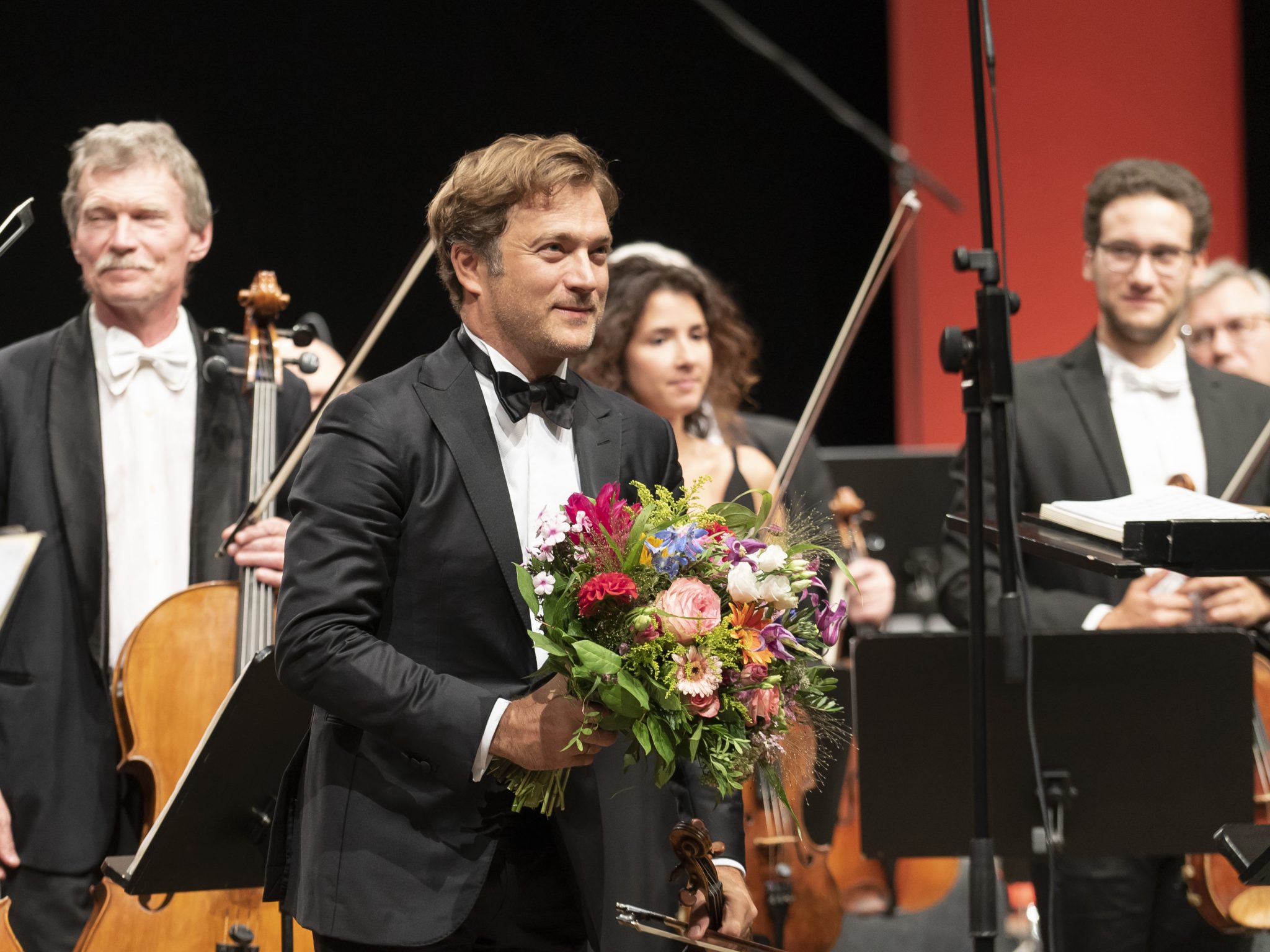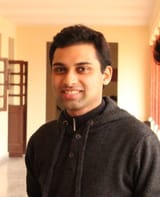The Quintessence of Three Composers

Quintessence is defined as the exemplar of a quality or class. In the context of the second day of Beethovenfest, the Russian National Orchestra (RNO), under the accomplished baton of director and conductor Mikhail Pletnev, presented three works from three different composers, which are regarded as the quintessence of the culmination of their respective musical careers. Indeed, one can say that the RNO, along with a guest performance by the charming and exuberant violinist Renaud Capuçon, brought an interesting repertoire, titled ‘Quintessences’, to the music hungry audience of the city of Bonn.
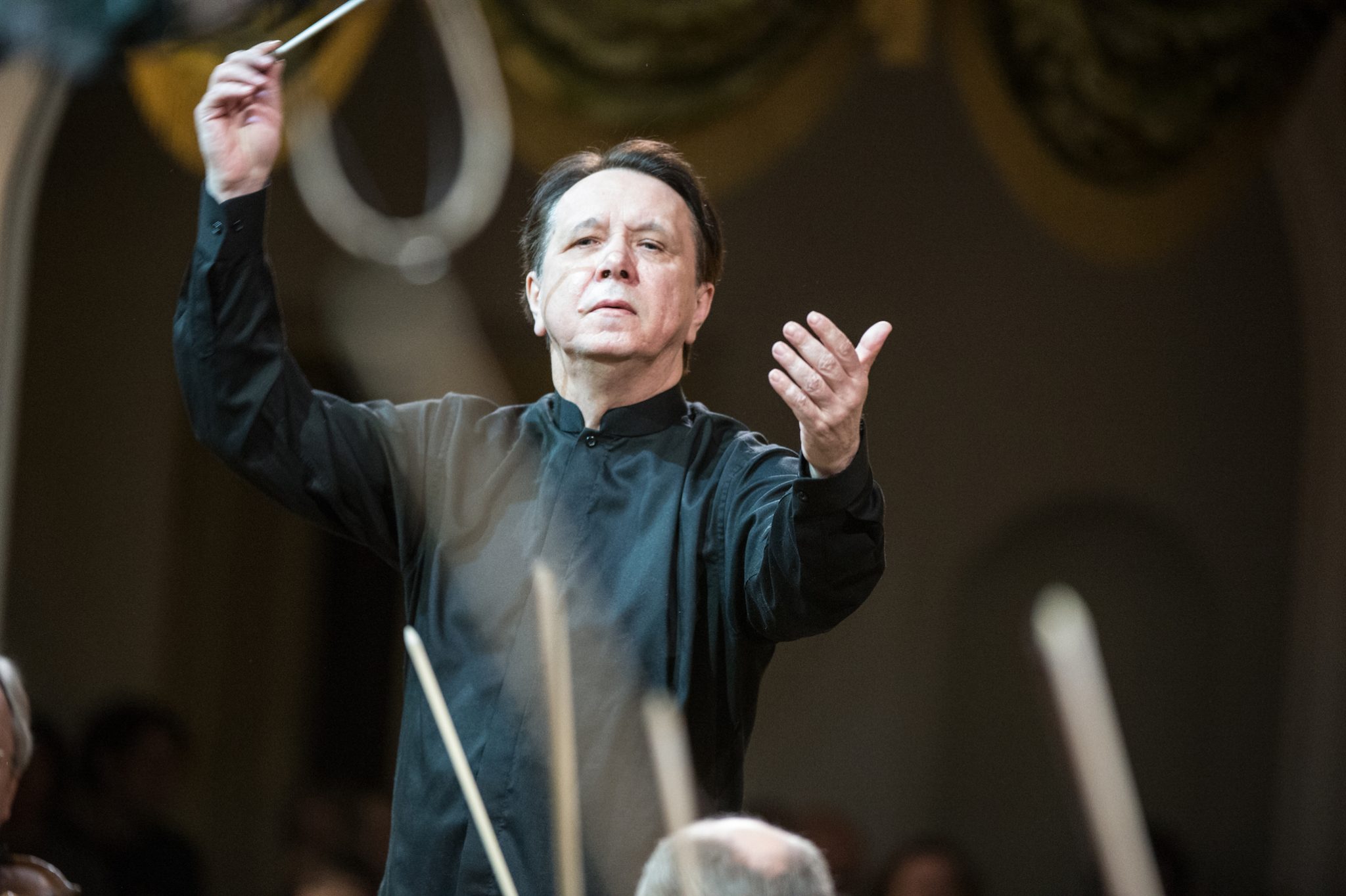
The programme opened with Gioachino Rossini’s Overture to William Tell, the last of his 39 operas. The overture is perhaps one of the most well-known works in classical music, with heavy usage in popular culture, and is a striking example of music from the Classical era, which ties it in beautifully with the theme of the concert. Structured into four parts or movements, leading attacca into one another, the overture essentially describes a setting before a battle, and finally leads to the climactic march into battle. Beginning with a prelude scored for celli and double basses, the first ‘movement’ depicts dawn. Opening with a soulful melody played by the principal cellist in E minor, the remaining basses provided the support in developing the theme, as it slowly transitioned into E major. The timpani, playing the quiet rolls, reminiscent of thunder, then marked the beginning of the impending storm in the next ‘movement’, initiated by the strings, with interventions from the various winds. The storm reached its peak with the brass instruments and the drum, and slowly subsided with instruments fading out. With the storm finally gone, we were then treated to the pastorale section, the first of the two well-known sections of this overture, which invoked nostalgia, serenity and lethargy, a drastic shift from the previous ‘movement’. Though the main theme played by the English horn is most easily remembered in conjuring the images of daybreak intended, one could not help but be drawn to the phrases played by the flautist of the RNO, who did a super job in essentially imitating a bird chirping melodiously, to wake up the soldiers, who would now initiate their march in the finale. Beginning with a call to war by the trumpets, the strings began the dynamic gallop into battle in the final movement of the overture, known widely due to its usage in The Lone Ranger, and which could not help but bring smiles on the faces of the audience. Although the orchestra began the movement enthusiastically, one could note that the climax fell somewhat short and was perhaps not as impactful as one may have hoped for, after the dramatic build-up.
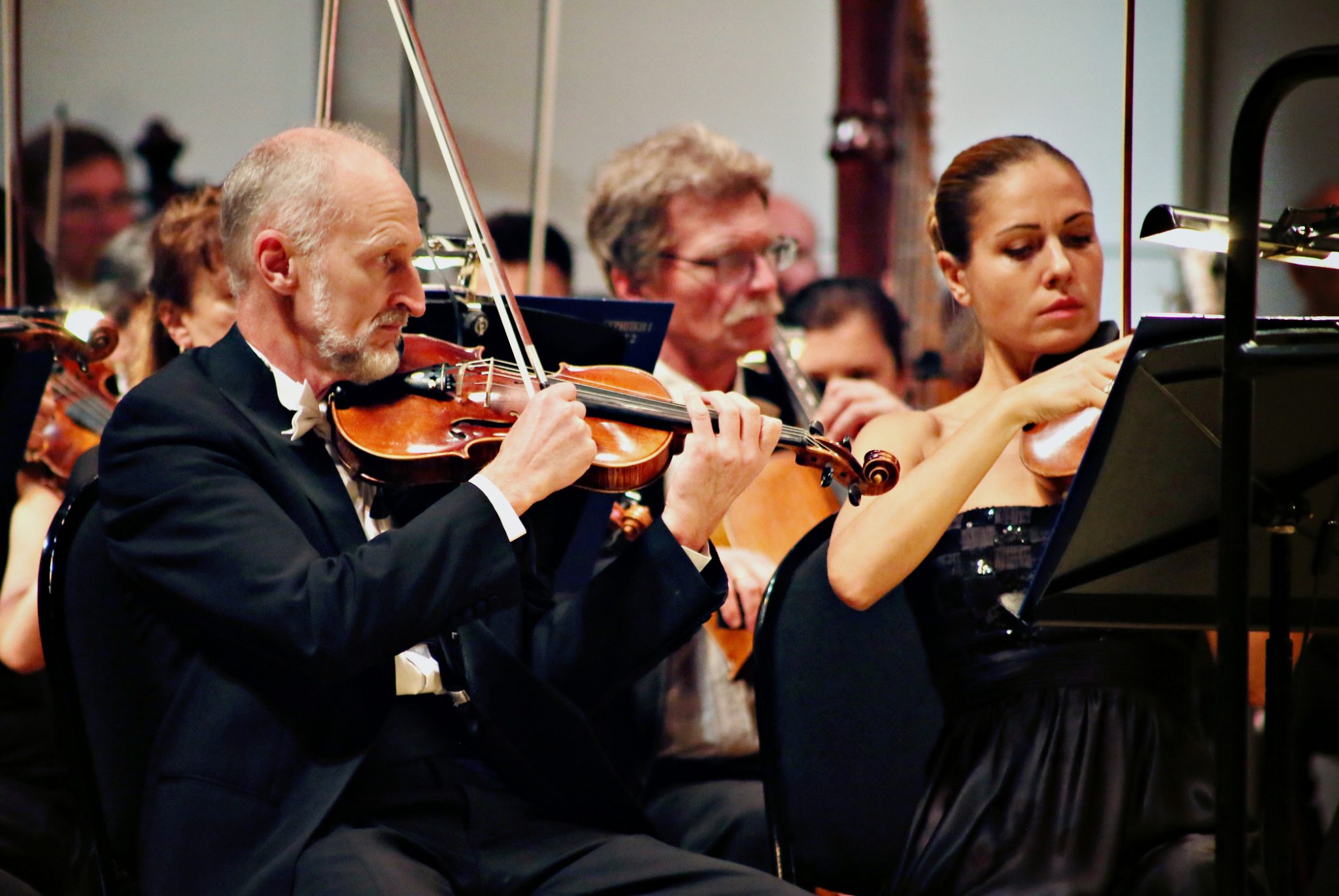
We then turned to the next performance for the evening: Robert Schumann’s Violin Concerto performed by Capuçon. Schumann’s only violin concerto, and one of his final works, this violin concerto has a somewhat morbid history attached to it and remained majorly unheard of, until it resurfaced in the twentieth century, now being taken up by many violinists. Written in the standard three-movement, fast-slow-fast form, the concerto is odd, however since it has no cadenzas. In accordance to the theme of the concert, the work takes a more objective approach, similar to the structure of Schumann’s other symphonic works, and is an example of his more conservative romantic style which he adopted after his marriage. Written close to his first suicide attempt, the concerto reflects a melancholy, which is perhaps indicative of Schumann’s state of mind. The work opened with a powerful theme played by the first violins, and the other strings pounding a beat in triplets, which Capuçon appeared to have been meditating to, before the entrance of the solo violin with the two powerful chords and recapitulating a varied, more virtuosic version of the very same theme. Capuçon displayed his mastery by using different tonal colours, and achieving blends that are typical of a master. The orchestra then transitions into a second theme which is somewhat happier and calmer, and this is again repeated by the soloist. This is where one can note that the composition itself falls somewhat flat: it is highly repetitive in nature, with themes developed but not executed to their fullest. In fact, the soloist repeats multiple phrases within his own solos, so one could form the impression that the first movement is somewhat boring. This would mean that the concerto is heavily dependent on performance, which in this case, was delivered masterfully by Capuçon, who managed to vary his expression of the repeats so that the audience remained enraptured. The first movement wraps up with a repeat of the original theme and ends with rapid double-stopped bariolage by the soloist, leading into arpeggiated runs to a closing chord. The second movement is a purely lyrical, with phrases exchanged between the soloist and orchestra. It continues the sad tone of the concerto, and the intermezzo style is very thoughtful, and would probably be representative of Schumann lost in though during his composition, and perhaps various depressed thoughts popping up in his mind. The second movement leads into the third movement without pause, which is much more joyous, and seems to provide hope in the key of D major. In this dance-like rondo for the third movement, Capuçon displayed his full range of virtuosity executing the violin acrobatics without breaking a sweat, and wrapped up the concerto on a very high note.
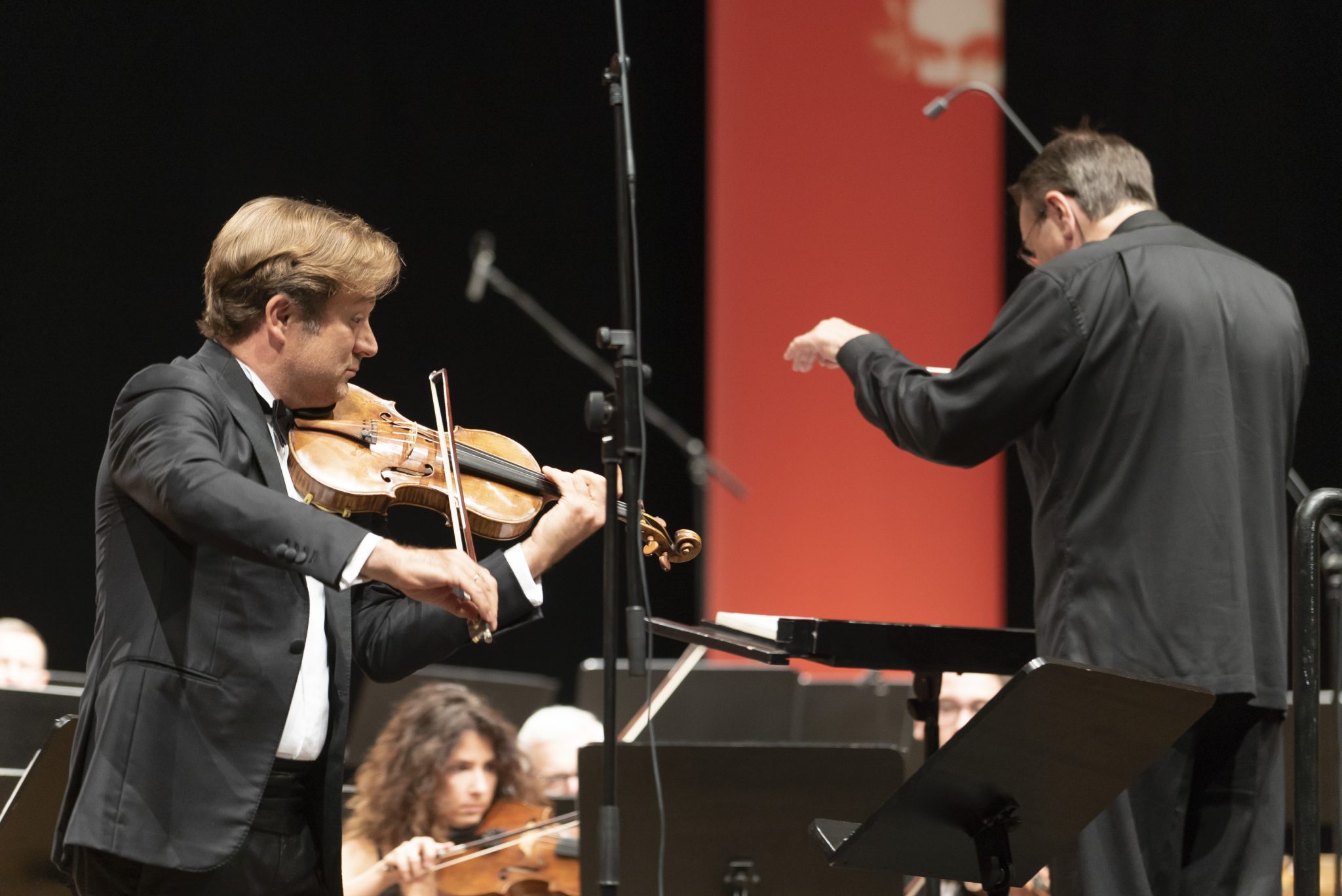
After a brief intermission, the RNO began their final piece for the evening: Dmitri Shostakovich’s Symphony No. 15. This was his final symphony, and in this sense can be treated as the quintessence of his compositional skills with regard to the symphony genre. The work makes heavy use of twelve-tone, and includes many ‘exotic’ instruments, such as the glockenspiel, the xylophone, the celesta, etc. and a range of non-traditional percussions such as castanets and wood blocks. The work itself is rather eerie, and produces a somewhat hypnotic sound, which appeared to mainly be an acquired taste. The first movement opened with chimes on the glockenspiel, and an introduction to the main theme by the solo flute, which was taken up later by the concertmaster, the basses and other winds. Most striking, however, was the sudden interjections of the ‘gallop’ from the finale of Rossini’s William Tell Overture, by the horn, which the audience had heard merely an hour ago. Played within Shostakovich’s work however, these allusions seemed a bit grotesque, as if the theme had been corrupted in some sense. The first movement was apparently supposed to be titled ‘The Toyshop’ by Shostakovich, which referred to the corruption of childhood innocence, and appeared to be a rather apt title. The second movement began with a chorale for the brass, which played dissonant chords shifting through them. This movement seemed invoke a sense of a pity, which was made more notable by the lament played the principle cellist, which utilized the large range of the instrument possible. Dynamics were made full use of, with dramatic crescendos and decrescendos, and subito changes. The celesta eerily imitated the solo by the cellist, shortly after which the third movement followed, attacca, through an explosive transition of dynamics and percussion. More dance-like, and filled with creative percussive effects, glissandos, the movement brought into one’s mind a scherzo. The movement ended with an almost clock-like ticking foreshadowing the finale. The fourth and final movement began with a melody that was somewhat lost on the now tired audience. The most remarkable was part was the coda, involving a sustained chord by the strings, with the range of percussion playing a beautiful toccata, with the glockenspiel and celesta joining in to play a melody from the first movement, and bringing the symphony and night to a close.
The concert was indeed one to not have been missed. It could be noted that Shostakovich, for some (such as I) is an acquired taste, but in the hands of Pletnev, the execution was immaculate. His subtle but very indicative gestures gave clear signals to the orchestra in order to deliver a very thorough interpretation. It was a great opportunity to have had a chance to see Capuçon in action, and I would have preferred to not have heard Shostakovich from none other than the RNO.
